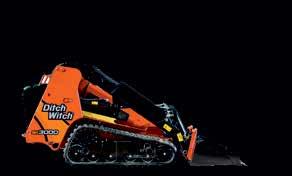TheConcernGrowing
A PUBLICATION OF THE OHIO LANDSCAPE ASSOCIATION








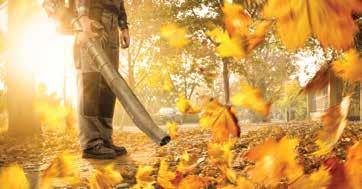
Greg Botson Certified Insurance Counselor

CAMERON MANERI
Cleary Brothers Landscaping










Greg Botson Certified Insurance Counselor

CAMERON MANERI
Cleary Brothers Landscaping
Deciding whether to diversify your landscaping company, or not, can be one of the most pivotal decisions you make as a business owner. Each choice has its unique set of benefits, risks, and implications for your business’s future. Understanding when to pursue diversification or when not to requires careful consideration of your company’s current position, market conditions, and your personal and financial goals. This article explores the key factors to consider and the pros and cons associated with each option.
Diversification involves expanding your service offerings or entering new markets to drive growth and mitigate risks. Here’s when it might be the right time to consider diversifying:
• Stable Core Business: If your landscaping company has a stable and profitable core business, diversification can be a strategic move to build on your success. A strong base allows you to explore new opportunities without compromising the foundation of your business.
• Market Saturation: If you are operating in a highly saturated market with diminishing returns, diversification
can provide a competitive edge. By offering new services such as hardscaping, irrigation systems, or seasonal services like snow removal, you can attract a broader customer base and reduce reliance on saturated markets.
• Seasonal Fluctuations: Landscaping services are often subject to seasonal changes. Diversifying into services that are less affected by seasonal variations, such as indoor plant maintenance or year-round garden design, can help smooth out revenue streams and maintain cash flow throughout the year.
• Customer Demands: If your existing clients are requesting additional services that you do not currently offer, it might be time to diversify. Addressing these demands can increase customer satisfaction and loyalty, as well as create new revenue opportunities.
• Financial Health: Diversification requires financial resources for investment in new equipment, staff training, and marketing. If your business is in a strong financial position with surplus capital, it may be an opportune moment to explore new avenues.
continued on page 6
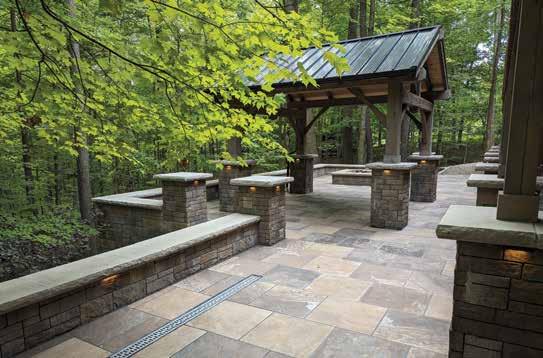
COVER: Landscape Ohio! Awards honor award winner, in the category of Garden Structures & Pavements, Sasak Landscaping, Inc.
OHIO’S PROFESSIONAL GREEN INDUSTRY ASSOCIATION
OHIO LANDSCAPE ASSOCIATION
9240 Broadview Road
Broadview Heights, Ohio 44147
Phone: 440.717.0002
Toll Free: 1.800.335.6521
Web: www.ohiolandscapers.org and www.myohiolandscape.com
DESIGNER / EDITOR
Rick Doll
REGULAR WRITERS
Michael J. Donnellan, M3 Wealth Management
Dr. Jim Funai, PhD., Cuyahoga Community College
Shelley Funai, Stan Hywet Hall and Gardens
Cameron Maneri, Cleary Brothers Landscaping
Sandy Munley, Ohio Landscape Association
Bobbie Schwartz, FAPLD, Bobbie’s Green Thumb
ADVERTISING INFORMATION
Submission deadline: 10th of the month, prior to the month of magazine publication. For advertising rates and ad specs, please call 440.717.0002, or email Rick Doll Jr. at rick@ohiolandscapers.org.
FEATURES
3 5 10 14 18 22 26 34 35
PRESIDENT’S COLUMN To Diversify, Or Not
WELCOME NEW MEMBERS
PERENNIAL FOCUS
A Colorful Fall Garden: Foliage, not Flowers
FISCAL FITNESS
Corrections in a Bull Market
FOR SAFETY SAKE
Navigating Ohio’s Workers’ Compensation System
PLANT OF THE MONTH
Salix Repens Var. Nitida: Silver Creeping Willow
FEATURE ARTICLE
Invasive Species: How to Manage Spotted Lanternfly
DIRECTIONS
ADVERTISING INDEX
DISCLAIMER
The Ohio Landscape Association, its board of directors, staff and the editor of The Growing Concern neither endorse any product(s) or attests to the validity of any statements made about products mentioned in this, past or subsequent issues of this publication. Similarly, the opinions expressed in The Growing Concern are those of the authors and do not necessarily represent the views of the Ohio Landscape Association.
OFFICERS
President
Cameron Maneri
President – Elect
Ryan Drake
Treasurer
Brandon Barker
Immediate Past President
Stephanie Gray, LIC
DIRECTORS
Amy Gatoo
Philip Germann
Matt Malone
Tim McCaskey
Bob Ramser, LIC
Tom Rieder, LIC
OLA STAFF
Executive Director
Sandy Munley
Associate Director
Rick Doll
Membership Coordinator
Melissa Roberts

SEPTEMBER 10, 2024
PLANT HEALTHCARE DAY
This full-day workshop combines all aspects of Plant Health Care (PHC) for both technicians and managers, with live demonstrations of PHC techniques. Held at Secrest Arboretum, located in Wooster, OH.
SEPTEMBER 19, 2024
NE OHIO FACILITY TOUR (Green Impressions)
Green Impressions first emerged from a passion for residential landscaping and a mission to provide clients with firstclass design, installation and grounds management. It is this mission, along with creativity and a trusted reputation, that has enabled them to build thriving landscapes and lasting relationships with their clients. Join us September 19th as we tour their facility located in Sheffield, OH.
SEPTEMBER 26, 2024
WOMEN IN LANDSCAPE MEET-UP
Our Women in Landscape Group was created for the purposes of connecting, empowering, and advocating for women in the industry, while amplifying the voices of our current & future leaders. Held at Brew Wall, located in Broadview Heights, OH. See advertisement (right).
OCTOBER 9, 2024
CENTRAL OHIO OPEN HOUSE (GreenLawn Specialists)
Kyle, Philip, Scott, and Chris Germann (yes, all brothers) have been maintaining landscapes since the late ’90s. Their hands-on approach and continuing education give them the ability to keep clients’ properties functional and beautiful, handling all aspects of maintenance including mowing, lawn applications, irrigation systems, backflow testing and more. This event will include a brief tour of their facility followed by an hour-long networking opportunity. See page 32 for more information.
NOVEMBER 20, 2024
OLA ANNUAL MEETING (Business Succession & Transition Planning Panel)
Stepping away from a business you’ve built isn’t a matter of if, but when. Join various industry experts as we discuss the topic of Succession and Transition Planning in addition to the OLA’s Annual Meeting. Held at St. Michael’s Woodside Event Center. See page 7 for more information.
The Ohio Landscape Association is delighted to welcome the following new member to our association:
REGULAR MEMBER
McNeill & Sons Tree Service
656 W. Turkeyfoot Lake Rd. Akron, OH 44319
(330) 606-1126
Garrett McNeill



The OLA’s Women in Landscape Group was created for the purpose of connecting, empowering, and advocating for women in the landscape industry. We want to help drive the change necessary to recruit and retain female professionals while amplifying the voices of current & future women leaders. If you are female, you are invited to join this FREE networking group. (Note: Based on group consensus, males may be invited to join from time to time.)
Our next meeting is scheduled for September 26th, 2024 and will be a very informal event.
DATE & LOCATION
SEPTEMBER 26, 2024
BREW WALL 1350 W ROYALTON RD, BROADVIEW HEIGHTS, OH 44147
AGENDA NETWORKING 3:00PM TO 5:00PM
COST TO ATTEND NONE
FOOD/BEVERAGE: ATTENDEES ARE RESPONSIBLE FOR YOUR OWN FOOD & BEVERAGE PURCHASES.
REGISTER TO ATTEND BY SEPTEMBER 19, 2024
ABOUT BREW WALL
BrewWall is proud to offer rotating craft beers, wines and sours on tap. Their craft beer colour spectrum is pale, gold, amber, copper brown and black. All wines are served at proper temperatures and you will never have to deal with an over oxidized wine at the BrewWall. If beer or wine is not your thing, no problem. They have a wide selection of food and spirits available.
continued from page 3
• Growth Opportunities: Evaluate the growth potential in new areas or services. Research market trends and demands to identify promising opportunities for expansion. Diversification should align with long-term business goals and market potential.
• Increased Revenue Streams: Diversification can create additional revenue streams, reducing dependency on a single source of income. By offering a variety of services, you can capture a wider range of customers and increase overall sales.
• Risk Mitigation: By entering new markets or adding new services, you can reduce your business’s exposure to risks associated with seasonal fluctuations or market downturns. Diversification can provide stability and protect your business against economic uncertainties.
• Enhanced Market Presence: Expanding your service offerings can improve your market presence and reputation. A broader range of services positions your company as a comprehensive provider, attracting more clients and enhancing brand recognition.
• Utilization of Existing Resources: If you have skilled staff and equipment, diversification can help you maximize these assets. For example, if your team is experienced in design, adding landscape architecture or garden planning services can leverage their expertise.
• Competitive Advantage: Offering a diverse range of services can give you a competitive edge over rivals who provide a more limited scope. This differentiation can attract more customers and enable you to command higher prices.
• Cross-Selling Opportunities: Diversifying opens up opportunities for cross-selling. For instance, a client seeking lawn care services might also need patio installation or outdoor lighting. This can lead to increased sales and deeper customer relationships. continued on page 8





DATE & LOCATION
NOVEMBER 20, 2024
ST. MICHAEL’S WOODSIDE 5025 EAST MILL ROAD BROADVIEW HEIGHTS, OHIO 44147
AGENDA
REGISTRATION / NETWORKING FOOD / CASH BAR
6:00 PM TO 7:00 PM
PROGRAM 7:00 PM TO 8:45 PM
COST TO ATTEND MEMBERS: NO CHARGE NON MEMBERS: $50
REGISTER TO ATTEND BY NOVEMBER 13, 2024
SPONSORED BY EMERALD SPONSORS


GOLD SPONSORS
SPONSORS

SPONSORSHIP OPPORTUNITIES ARE STILL AVAILABLE FOR OUR NORTHEAST OHIO MEETINGS SEASON. CALL THE OLA OFFICE AT 440.717.0002.



Transition/Succession Planning: Planning for Your Future
Many start a business without considering what the end might look like. Whether that end comes unexpectedly, by the passage of time, or through careful planning, it’s important to always build your business with a potential successor in mind. Whether you transition to an employee, a family member, a sale, or even private equity, it’s crucial to the overall success of the business.
Join us on November 20th, 2024, for an open panel discussion with industry experts and your peers. We will explore key metrics, systems, and the organizational decisions every owner should consider. Not planning to sell yet? Even if it’s not currently on your mind, understanding these metrics is essential to business success and maximizing your investment when the time comes.
Topics of discussion will include:
• Preparing Your Business for Transition
• Understanding Business Valuation
• Key Financial Metrics
• Advising and Preparing Family or Employees for a Transition
• Engaging with Prospective Buyers
• Structuring the Transaction
• Maximizing Your Investment
• Understanding EBITDA (Earnings Before Interest, Taxes, Depreciation & Amortization)
• What Private Equity Looks For
GUEST SPEAKERS (PRESENTERS TO BE ADDED)
TODD PUGH / CEO AND FOUNDER ENVIROSCAPES (SOLD TO SCHILL) At fourteen, owner Todd E. Pugh began mowing lawns to earn spending money and begin saving for college. After graduating from The Ohio State University, he incorporated his growing business and he renamed it Enviroscapes. Strong business values and ethics have enabled Enviroscapes to grow from its first $5.00 per week mowing client into a multi-million dollar landscape company that ranks in the top 2% of all landscape companies nationwide. Enviroscapes is known nationwide by its peers for award winning landscapes and being a trend setter in LEAN business practices.
DAN BARON / ATTORNEY AT BARON LAW
Dan A. Baron is an estate planning and business attorney practicing in the greater Cleveland area. He is a member of the Ohio Bar Association, West Shore Bar Association, and Cleveland Metro Bar Association. Dan’s passion for helping individuals and business owners plan for the future has stemmed from owning a landscape construction company for over 15 years. As an active member of the Green Industry, Dan has learned first-hand the importance of asset protection and succession planning. Dan also holds a five star rating on Avvo and has written articles of legal scholarship.
ED KOENIG / CO-OWNER, CEO & DESIGNER AT LIFESTYLE LANDSCAPING, INC.
Since 1982, Ed Koenig has been actively involved in all aspects of Green Industry business development including; budgeting, recruiting, production management, systems development, strategic planning, sales management, marketing management, and landscape design. Ed has spent nearly 35 years with Lifestyle Landscaping, Inc., located in North Ridgeville, Ohio, with an additional 10 years of experience at other Northeast Ohio landscape businesses.




continued from page 6
• Increased Complexity: Managing a broader range of services can increase operational complexity. This includes coordinating different teams, managing diverse equipment, and handling multiple supply chains, which can strain resources.
• Initial Investment: Diversification often requires significant upfront investment in new tools, staff training, and marketing. This financial commitment can be challenging, especially if the new services take time to become profitable.
• Dilution of Focus: Expanding into new areas might dilute your focus from your core services. If not managed properly, this can lead to a decline in the quality of your primary offerings and impact overall customer satisfaction.
• Learning Curve: Entering new markets or offering new services comes with a learning curve. Your team may need time to adapt to new techniques, tools, and customer expectations, which can temporarily reduce efficiency.
• Customer Perception: Poorly executed diversification can confuse or alienate your existing customer base. Clear communication and maintaining high standards across all services are essential to avoid negative impacts on your brand.
• Market Risks: New services or markets come with their risks. If the new area fails to meet demand or faces unforeseen challenges, it can adversely affect your business. Thorough market research and contingency planning are crucial.
Deciding whether to diversify your landscaping company requires careful consideration of your business’s current status, market conditions, and personal goals. Diversification can provide new growth opportunities and reduce risk but comes with its own set of challenges. Ultimately, making the right choice for your business depends on your specific circumstances and long-term objectives. By thoroughly evaluating your options and consulting with financial and business advisors, you can make an informed decision that positions your company for future success.


Mobile:
cdunchuck@jerrypate.com
syoung@jerrypate.com



By the beginning of September, most gardeners are tired of working in their gardens. They’ve planted the old standbys, Asters and Chrysanthemums for color. If they are a bit adventurous, they’ve also planted Aconitum (Monkshood), Japanese anemones, Tricyrtis (Japanese Toad Lily) and Sedum
I’d like to suggest that instead of thinking about what will bloom in the fall, more consideration should be given to foliage changes. Just as tree and shrub fall foliage is variable, so too is perennial fall foliage. The color depends on three main factors: light intensity, soil, and temperature.
Cool fall temperatures can also bring out different colors on perennials with ever-present foliage, such as Heuchera and Bergenia.
Dryopteris erythrosora (Autumn Fern) is somewhat misnamed because its new fronds are a bronzy-orange, whether produced in spring or fall with their cooler temperatures, than in summer when the fronds become green. This 2 foot fern that loves shade does have a cultivar – ‘Brilliance’ – but the frond color is no different than that of the species. The difference is the coloration of the spores on the backside of the frond.
A shade groundcover/perennial with excellent fall foliage is Epimedium (Barrenwort). Only 12 inches tall at best, it is not an aggressive groundcover but will cover ground eventually. There are so many different ones now that the choice should be based on the spring flower color and the type of flower. In early spring, the foliage is edged and tinged with red, becomes green by summer but acquires shades of orange and red in the fall.
continued on page 12
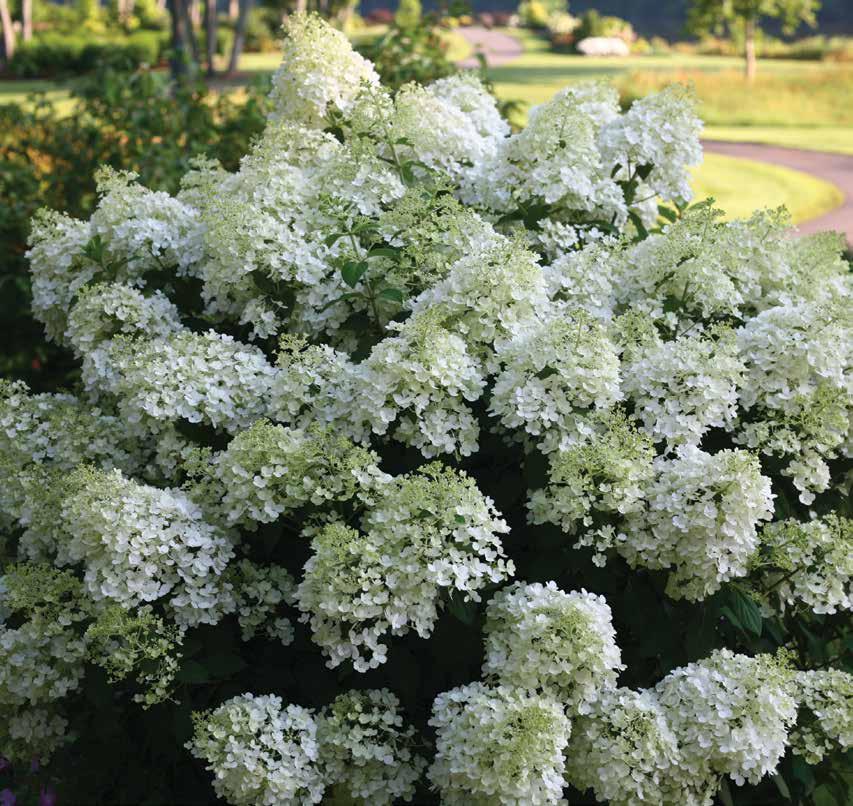






continued from page 10
Bergenia (Pigsqueak), another spring bloomer, has large, shiny leaves that turn burgundy or reddish-bronze in the fall and winter. The low-growing, glossy, ovate leaves are slightly toothed and they remain evergreen in zone 6. With climate change now so evident, I suspect that they also remain evergreen in zone 5. In the fall, the leaves take on a purple-bronze color and then turn a more intense burgundy in the winter. Some cultivars such as ‘Winter Glow’ are grown for their stronger winter color. This perennial is usually grown in part shade but can be grown in full sun once well established.
A rarely used shade perennial, suitable only for moist sites, is Rodgersia (Roger’s Flower). All of the species grow 3 to 4 feet high and wide with large leaves and large inflorescences that appear in late June and early July. In the fall, the leaves turn a coppery-bronze.
I love Heuchera for its ever-present color that tends to change with the seasons. As an example, I give you Heuchera ‘Southern Comfort’ in July, August, and December.
There are many more perennials with excellent fall foliage but you will have to wait for the next installment to learn about them.
Bobbie Schwartz, FAPLD, owner of Bobbie’s Green Thumb in Shaker Hts., Ohio, is a landscape designer, consultant, freelance writer, and lecturer whose specialties are perennial gardens and four season landscapes. In addition to being an Ohio Landscape Association (OLA) member, she is an active member of the Ohio Nursery and Landscape Association (ONLA) and Perennial Plant Association (PPA). Bobbie is a Past President of the Association of Professional Landscape Designers (APLD).






• Screened Topsoil (Stored in a hoop house on site.)
• Granite & Sandstone Boulders From 8” to 12’+ priced per ton and per piece on request. 1’-2’ granite and 2’-3’ granite available, presorted, for immediate pick up.
• Mixed Boulders (Available for immediate pick up.)
• Washed Gravel, Concrete & Mason Sand.
• Crushed Gravel & Limestone products available.

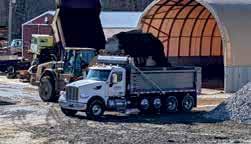



MICHAEL J. DONNELLAN M3 Wealth Management
An Individual Retirement Account (IRA) is a personal savings plan that offers specific tax benefits. IRAs are one of the most powerful retirement savings tools available to you. Even if you’re contributing to a 401(k) or other plan at work, you might also consider investing in an IRA.
A market correction is traditionally defined as a downward price movement of 10% or more. When you examine stock market charts, you can see that stock prices never go up in a straight line. They rise and fall on their way to higher prices. Experienced investors consider this normal. However, you may also notice larger dips in some places, indicating that people began selling stocks so quickly that prices dropped as much as 10 percent. A 10 percent dip is widely considered a market correction. This can be as normal as other dips, but if you don’t understand the phenomenon, it can be alarming.
During bullish years, corrections happen more often than you think. However, when corrections occur, it is not uncommon to see concerns about a “bear market” or “recession” rise. However, historically speaking, the stock market increases about 73% of
the time. The other 27% of the time, market corrections reverse the excesses of the previous advance. The table on page 16 shows the dispersion of returns over time. Critically, note that drawdowns of greater than 10% only occur 13% of the time.
The S&P 500 was up 24% for the full year in 2023, but there was a 10% pullback in the late-summer. We are seeing a similar situation in 2024.
However, like last summer, when investors should be buying, many don’t. This is because declines tend to lead investors to make one of the most significant investing mistakes, which is almost always psychological. The pullback in the indices over the last two weeks certainly woke up overly complacent investors, both retail and professional alike.
continued on page 16






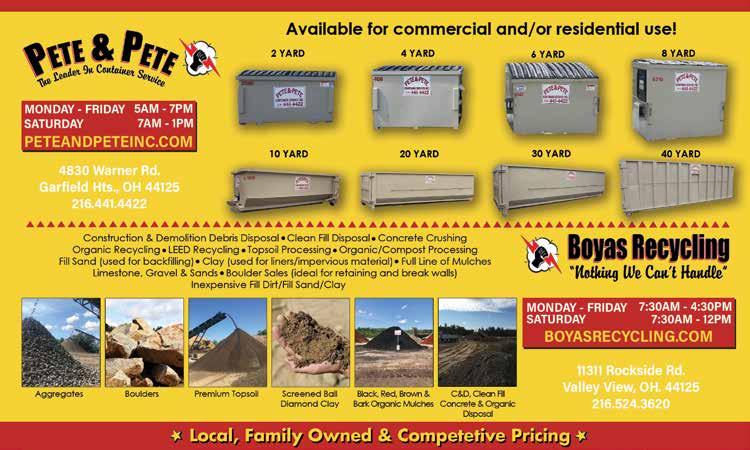
continued from page 14
Stocks are positive of the time
Source: Global Financial Data, as of 2/6/24, S&P 500 total returns, yearly, 1926-2023. Numbers do not sum to 100% due to rounding
I have counted 10%+ pullbacks in 23 out of the last 45 years, so basically every other year. And in those 23 years with a correct, the market was still positive for the year (this year included).
Declines spook investors while rising prices excite investors. What if you looked at stock prices as you would any other good or service? If the price of a new Corvette goes from $80,000 to $125,000 are you excited and more likely to buy it? What if the price drops to $70,000? But many investors don’t buy when stock prices drop fast.
We are all going to make bad choices from time to time. The goal is to try to make bad choices that don’t have an outsized effect on our investing. The current market correction is likely just that—an ordinary pullback that is normal within every bullish year. Could it devolve into something larger? Absolutely, but the credit and stock markets technical indicators should provide some warning.
Sir John Templeton said, “Bull markets are born on pessimism, grow on skepticism, mature on optimism and die on euphoria.” It is healthy to have some doubt in the market along with some “normal” corrections.
However, if you feel you must “do something,” make small changes to avoid the risks of bad decisions.
• Set goals.
• Remember that the “Trend Is Your Friend.”
• Be bullish or bearish, but not a pig. (Pigs get slaughtered)
• Remember, it is “OK” to pay taxes.
• Look to buy damaged opportunities, not damaged investments.
• Diversify to control risk.
• Rebalance regularly.
• Control risk by always having pre-determined sell levels and stop-losses.
• Do not allow panic to influence buy/sell decisions.
• Expect, but do not fear corrections.
• Expect to be wrong, and correct errors quickly.
• Don’t buy investments on “hope.”
• Be flexible.
• Have patience to allow your discipline and strategy to work.
• Don’t let politics determine your investments.
• Be contrarian.
• Do not allow media to influence your investment decisions.
Importantly, keep your market perspectives and behavioral traits in check. Most importantly, if you don’t have an investment strategy and discipline, that is an ideal place to begin. Talk to your financial professional for specific information relative to your goals, risk and timeframes.
Scenarios illustrated are hypothetical in nature, results may vary. Investing is subject to risk which may involve loss of principal. Past performance is not indicative of future results.The M3 Wealth Management Office does not provide legal or tax advice. Consult an attorney or tax professional regarding your specific situation. The information herein is general and educational in nature and should not be considered legal or tax advice.Michael J. Donnellan specializes in stock selection and retirement planning. Feel free to contact him with any questions or comments at the M3 Wealth Management office at 17601 W. 130th Street – Suite 1 in North Royalton, Ohio. Phone number (440) 652-6370 / Email: donnellan@m3wealthmanagement.com Securities and advisory
offered through L.M. Kohn & Company Registered Broker/ Dealer Member FINRA/SIPC/MSRB10151 Carver Rd. Suite 100 – Cincinnati, Ohio 45242 (800) 478-0788








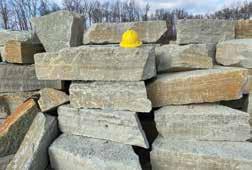


For most employers, workers’ compensation is one of a thousand items that require their attention daily. Most workers’ compensation professionals will tell you that the best injury is one that never happens. The reality is that there are 257,000 private and public Ohio employers incurring approximately 67,432 allowable injuries in 2023. (Source: Ohio Bureau of Workers Compensation 2023 Annual Report)
Managing a workers’ compensation program can be simplified by implementing a few standardized processes that will make it easier for you to minimize lost days, control your costs and maintain productivity in your business.
Having a standardized injury reporting process and claim investigation mandate in place before an injury happens means that you will have tools at your disposal to quickly analyze what happened, is it work related and are there any red flags that will lead you to contest the claim.
Your Managed Care Organization (MCO) can provide your company with guidance on any questions related to injury reporting and seeking BWC (Bureau of Workers Compensation) authorized provider medical treatment. The injured worker will need to complete a First Report of Injury (FROI), which is the BWC form required for filing a claim application. It is also a good best practice to have your employee complete a supplemental accident report that is specific to your work environment and expands on some of the important questions that arise during an injury investigation, such as – were there any witnesses? Did you immediately notify your supervisor?
continued on page 20


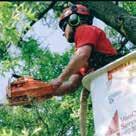





continued from page 18
Once a claim application is filed with the BWC, things begin to move quickly and your window of opportunity to minimize the impact is small. The most common type of compensation is Temporary Total (TT). This is when the BWC pays the injured worker a portion of their regular pay to cover their lost wages while recovering from an allowed injury.
If you are not contesting the claim or its compensability, your focus should move to helping your injured workers get the necessary treatment they need to quickly return to full duty employment.
If you can accommodate a return to light duty while the treatment moves forward, then making a light duty job offer will prevent the claim from flipping from “medical only” to “lost time.” It will also keep your injured worker from getting used to being off work because of the injury. If light duty is not an option, then another path is to pay the claimant their regular wages – also known as salary continuation – while they are off work.
When a claim is allowed the BWC attaches a reserve to estimate and cover future costs. There are several ways to minimize the impact a reserve has on your annual premiums:
Settlement – The most effective way to close a claim and prevent future costs from being applied is to negotiate a full and final settlement with the injured worker. The settlement
amount is paid out of the claim by the BWC, the cost is added to the overall claim cost and the injured worker receives monies in lieu of future treatment and compensation.
Disability Relief – The BWC currently has a program in place to recognize pre-existing conditions that negatively impact the allowed conditions or the injured worker’s recovery from the allowed condition. The BWC will hold an informal conference with the employer/Third Party Administrator (TPA) to review the application and the medical that supports the request and then will determine an impact percentage between 0% and 100%. This percentage relates to the amount of “relief” the employer will receive due to filing a successful application.
Subrogation/No Fault MVA (Motor Vehicle Accident) – When a third-party is the cause of a workplace injury there may be relief that can be pursued to offset the cost of the claim. The most common example is an employee’s claim that is the result of a non-at-fault vehicle accident involving a third party.
Navigating the workers’ compensation system can feel frustrating and at times complicated, but with your MCO and TPA partners you have access to subject matter experts that can make your job easier and keep your premiums down.
This article was provided by Sedgwick program manager, Dominic Potina. For more than 50 years, Sedgwick has been helping employers answer virtually every question there is about workers’ compensation. Sedwick is the administrator for the OLA’s group workers’ compensation plan. If you have any questions, contact Domenic at 614-579-4723 or dominic.potina@sedgwick.com.





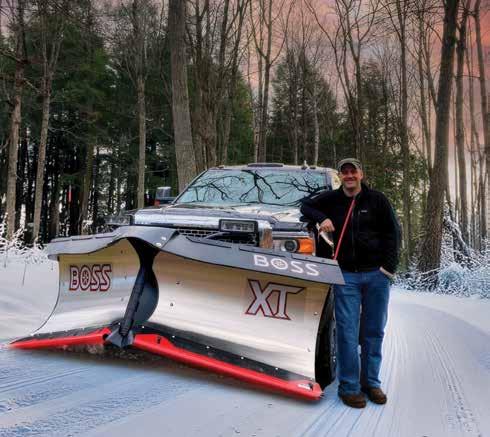




JIM FUNAI, PhD
Cuyahoga Community College
SHELLEY FUNAI, LIC
Stan Hywet Hall and Gardens
Over the years, we’ve discussed a few different Willows that have found popularity in the landscape, including Dapple Willow (S. integra ‘Hakuro Nishiki’) and Peking Willow (S. matsudana). Someday, we plan to cover the myriad species falling under the common name “Weeping Willow,” but that will undoubtedly take some time to prepare.
This month, we want to share a great Willow that has come into our repertoire thanks to Bill Hendricks of Klyn Nursery. When discussing plants to include in a rain garden soil study, Bill suggested Salix repens var. nitida. To be honest, neither one of us had any clue about this plant. It’s something we try not to
beat ourselves up over, after all, there are easily more than 300 willow species in the world – and we’re pretty sure we’ve got a long way to go before we aren’t surprised by one.
Salix is an interesting genus, with circumpolar distribution in the Northern Hemisphere. There are reportedly about 75 species native to North America alone. Humans have a longstanding relationship with Willows, including a discovery by researchers at the University of Helsinki of a fishing net woven from young stems of a Willow dating back to 8300 BC. That’s over 10,000 years of history! continued on page 24













continued from page 22

Plenty of records exist of ancient cultures utilizing the flexibility of young Willow branches to make baskets, wattle fences, and walls for housing. The term “withy,” or “withe,” is Olde English for the long, straight, easily-bent branches of Willows. That term has found its way into other plants such as Witherod Viburnums (describing their long straight branches).
Perhaps the greatest relationship between humans and the Willow dates back to ancient Sumerian culture, where the leaves were used as a pain relieving agent. The leaves and bark contain Salicin, a glucoside chemical compound produced by the plant to reduce feeling after pest attack. As it turns out, chewing on the leaves and bark – thus ingesting Salicin –breaks down into acetyl-salicylic acid in humans. A modern product of this very chemical reaction is called aspirin! With that in mind, we don’t suggest you run out and start chewing on your clients’ trees, but should you find you forgot to restock the first-aid kit on the truck, perhaps give it a try!
Usually, when someone hears the word Willow, they are picturing the beauty and grace of the Weeping Willow, or perhaps the unique blooms of the many species of Pussy Willow. The species we have selected this month is far from
those famous Willows in habit. Salix repens, in general, is a low-growing and spreading plant. Repens is derived from the Latin word repent, which means creeping or crawling. The most common creeping Willow on the market is Salix repens var. nitida. This naturally occurring variety – as opposed to a cultivated/made variety or cultivar – will stay around 3 feet tall and send arching branches up and back towards the ground to cover about 5 or 6 feet. These branches will touch down, readily root in, and extend beyond this distance with ease.
Leaves are small (<1 inch) with a bright, silvery-gray fuzz adding interesting foliage-color to the landscape. Stems are thin and arching, turning a great color of red for the winter. The overall habit of mounding over and being thick-asthick-can-be is somewhat reminiscent of some tall groundcover type Cotoneasters. Leaves being caught in the mounded branches may be a minimal concern if your client is a total clean freak, but we haven’t had any issues with this becoming unsightly on the plants we have.
Now, back to the mention of the rain garden study… We are very pleased with the performance of this plant in all three soil blends – each with varying moisture content – through the seasons. With two full seasons of testing, the shrubs are


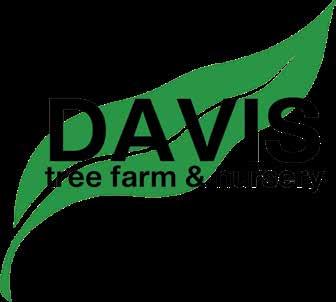


all performing great in a wide range of soil types. While the plant – native from Western Europe to Western Asia – is often found in moister soils, it seems to tolerate drier sites, so long as you don’t expect it to survive terrible soil and heat from a poorly-built parking lot island.
Salix is a great genus to pick plants out of, and perhaps deserves a better understanding from the landscape industry, in general. While there are some Willows that have given the genus a bad rep, there are plenty of great options once you study their preferences and abilities. We hope you’ll give this silvery, tall ground-cover a shot in the proper design. We are certain it will not disappoint you, or your client!



Jim Funai, PhD, is full-time faculty at Cuyahoga Community College, a NALP accredited associate of applied science in hoticulture degree program. He has a PhD in Landscape Engineering and Forestry and is a Licensed Arborist. Shelley Funai is Grounds Manager at Stan Hywett Hall and Gardens in Akron, Ohio, which offers a historic estate designed by Warren H. Manning and a beautiful manor house museum. She is Landscape Industry Certified in Ornamental Plant Care.





Invasive species are organisms that have been introduced to an environment where they are not native. These intruders pose a triple threat: they adapt quickly to the new environment, reproduce rapidly, and cause harm to the native plants and animals of the region.
It’s crucial to note that not all non-native species are invasive. In fact, some are essential to our food supply. For instance, popular crops like wheat, tomatoes, and rice are not native to the United States, but they are not considered invasive because they don’t harm the ecosystem.
In a quest for beautiful lawns and well-maintained gardens, the threat posed by invasive species is often overlooked. These organisms, which are not native to a particular area, can wreak havoc on the environment, our health, and the economy. Among them, the Spotted Lanternfly has emerged as a particularly troublesome invader, capable of causing significant damage to local landscapes and the surrounding ecosystem. In this article, we will explore what invasive species are, why it’s important to manage them, and focus on how to prevent and deal with the Spotted Lanternfly. continued on page 28
Invasive species can be animals, plants, or pathogens. Some notable examples include:
• Zebra Mussels in the Great Lakes
• Box Tree Moth
• Emerald Ash Borer
• Asian Long-horned Beetle
• Spotted Lanternfly
An extensive list of invasive species can be found on the Ohio Department of Natural Resources website at www.ohiodnr.gov.


continued from page 26
Managing invasive species is of utmost importance for several critical reasons. These unwelcome guests can lead to the extinction of native plants and animals, disrupt biodiversity, and alter wildlife habitats. This negative impact ripples through the environment, economy, and even human and animal health and safety.
The Spotted Lanternfly (Lycorma delicatula) is an insect native to China. The species first appeared in Pennsylvania in 2014. The Spotted Lanternfly poses a significant threat because it feeds on a wide range of fruit, ornamental, and woody trees, as well as other native species. This invasive species can spread over long distances by way of infested plant materials or other items containing egg masses moving from place to place.
Currently, Spotted Lanternfly populations have been identified in 14 states, including Connecticut, Delaware, Indiana, Maryland, Massachusetts, Michigan, New Jersey, New York, North Carolina, Ohio, Pennsylvania, Rhode Island, Virginia, and West Virginia.
Spotted Lanternflies are distinctive insects with a unique and easily recognizable appearance. Here’s a description of what they look like at different stages of their life cycle.
Spotted Lanternfly eggs are laid in rows and covered with a gray, mud-like substance (see page 30). Early in their nymph stage, Lanternflies are black with white spots. As they mature, they develop reddish patches on their bodies (see image above). Nymphs do not have fully developed wings, making them flightless at this stage.
Adult Spotted Lanternflies are approximately one inch (2.5 cm) long. They display striking and vibrant colors with grayish forewings adorned with black spots and patches of red and white. When their wings are folded, they reveal a bold red and black pattern (see image on page 26).
Identifying Spotted Lanternflies at various life stages is essential for effective detection and reporting.
continued on page 30










Preventing Spotted Lanternfly infestations is essential to protecting the environment and your property. Here are practical steps you can take to prevent these invasive insects from becoming a problem:
• Regularly inspect your clients’ properties, especially trees, plants, and outdoor items.
• Be vigilant during the late summer and fall, when Spotted Lanternflies are most active.
• Educate yourself, your staff, and your cleints about what Spotted Lanternflies look like at all life stages.
• Before the winter holidays, examine outdoor items for Spotted Lanternfly egg masses.
• Look for egg masses on surfaces like tree trunks, rocks, and outdoor furniture.
• Scrape off any egg masses you find into a plastic bag filled with hand sanitizer. Seal the bag tightly and dispose of it properly to prevent hatching.
• Regularly inspect your clients’ trees and plants for signs of Spotted Lanternfly infestations.
• Pay particular attention during dusk and nighttime when these insects tend to gather on stems and trunks.
If you’re traveling from an area known to have Spotted Lanternfly populations, thoroughly inspect your belongings, especially outdoor equipment and vehicles, before leaving. Make sure you’re not inadvertently transporting these pests to new areas.
If you suspect you’ve found a Spotted Lanternfly in Ohio, take these steps:
• Do Not Move the Material: Avoid moving any potentially infested wood or materials from the site.
• Remove Specimens: Collect eggs, nymphs, and adult Lanternflies in a plastic bag filled with hand sanitizer or freeze before properly disposing.
• Report Your Sighting: You can report spotted lanternflies (SLF) in Ohio to the Ohio Department of Agriculture (ODA) by calling (614) 728-6400 or emailing plantpest@ agri.ohio.gov. You can also report sightings using the Ohio Plant Pest Reporter online, or the Great Lakes Early Detection Network mobile app. When reporting a sighting, you should include your name, phone number, and the date of observation. You can also take a picture to include with your report. The ODA encourages you to report and destroy SLF immediately to help slow the spread of the invasive species.
Managing invasive species like the Spotted Lanternfly requires vigilance and cooperation. By following these steps and being proactive in your landscape care, you can help protect your clients’ property and contribute to the preservation of our environment. Together, we can safeguard our local ecosystem from the harmful effects of invasive species.
This article appeared on the LaurelRock Landscaping “In The News” section, located at www.LaurelRock/inthenews. LaurelRock is a premier residential landscape firm located in Wilton, Connecticut. For over 50 years, LaurelRock has built its reputation on creating and maintaining landscapes with expertise and professionalism.







EVENT INFORMATION
DATE & LOCATION
OCTOBER 9, 2024
GREENLAWN SPECIALISTS
774 PEACHBLOW RD, LEWIS CENTER, OH 43035
AGENDA REGISTRATION
6:00PM to 6:30PM
WELCOME & FACILITIES DISCUSSION
6:30PM to 6:50PM
FACILITIES OPEN HOUSE
6:50PM to 7:15PM
NETWORKING/FOOD SERVED
7:15PM to 8:15PM
COST TO ATTEND MEMBERS: NO CHARGE NON MEMBERS: $50
REGISTER TO ATTEND BY OCTOBER 2, 2024
SPONSORED BY EMERALD SPONSORS


SPONSOR


BRONZE SPONSOR

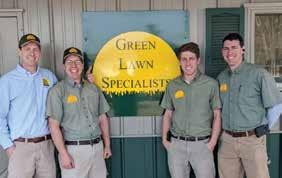
GreenLawn Specilists is a local family team specializing in landscape maintenance.
The Germann Brothers have been maintaining lawns and landscapes together since the late 90’s. They handle all aspects of maintenance including mowing, lawn applications, irrigation systems, backflow testing, landscape lighting, spring and fall cleanups, mulch, and more.

As brothers, Kyle, Philip, Scott, and Chris take a very hands on approach to each of their areas of expertice and place a high value on continuing education, giving them the ability to keep their client’s properties both functional and beautiful.
GreenLawn Specialists is unique in its focus on the maintenance of smaller residential properties. Great software gives them the ability to cater to clients with a smaller total spend, and aggregate more of them to create the needed revenue picture. Their single location - with about 40 peak employees - services about 3,000 total clients from a 5 acre parcel purchased in 2017. This has placed their focus on improving operational efficiency rather than growing, as they have no plans for a second branch/location.
Note: In lieu of our typical Central Ohio Facility Tour, the Germann Brother’s have generously offered to host an Open House Networking Event for us in 2024. We will begin with a brief discussion about the history and focus of their company, followed by a quick tour of the facility. We will then conviene into networking time.
Join us, October 9th, 2024 at GreenLawn Specialists. Space is limited.


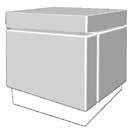










Entering OLA’s Landscape Ohio! Award Programs is an excellent opportunity to showcase your talent and celebrate your achievements. Here’s a breakdown of how you can make the most of this valuable opportunity:
1. Document Your Work:
• Before and After Photos: Capture clear and compelling before and after photos to highlight the improvements made. A well-documented project can vividly convey the extent of your work. Before photos are helpful, but we recommend limiting the number of them and concentrating on the finished project.
• Stage the Scene: For “after” photos, clean up the site and add some finishing touches like pillows or a pitcher of lemonade to make the space look inviting and lived-in. Be sure to remove things like hoses and trash cans. Open umbrellas, uncover grills, and be sure everything is tidy.
2. Select the Right Projects:
• Choose Mature Projects: Projects that have had time to mature and show their full potential typically perform better. Consider revisiting past clients. You can enter projects up to 5 years after completion.
• Category Selection: If you’re unsure which category to enter, reach out for guidance. For instance, installation projects with minimal plant material should be entered in categories focused on hardscape elements. If you are primarily showing seasonal color enhancements, select the Best Use of Color category. We will be happy to provide guidance on your category choice.
3. Craft Your Entry:
• Tell Your Story: Use your entry forms to narrate the story behind each project. Explain client needs, your solutions, design elements, and how the project has improved over time. When describing the photos provided, do not simply state “view looking east, “view from property line,” etc.
• Detail Your Maintenance: For maintenance projects, describe your upkeep process and how it has enhanced the property. Discuss all the services you provide. Full service maintenance projects score better.
by SANDY MUNLEY Executive Director / OLA
4. Seek Assistance:
• Call for Help: Don’t hesitate to call the OLA Office for help if you have questions or need clarification. The process may take time, but assistance is available, even if you need to call multiple times. We are happy to help! We want you to have the best opportunity to win.
5. Increase Your Chances:
• Enter Multiple Projects: Submitting several projects is recommended. Entering the same project in a couple different categories can also boost your chances.
• Be Creative: Use the awards program as a platform to push the boundaries of your creativity. Aim to elevate your projects from average to outstanding while staying within budget!
6. Celebrate and Promote:
• Reward Your Team: The winners will be announce and celebrated at the Landscape Ohio! Awards Gala. Consider celebrating with your staff, such as renting a limo for the Gala. It’s a great way to motivate and reward your team.
• Promote Your Success: Once you win, leverage your award in marketing materials and portfolios. Highlighting your “Award Winning” status can enhance your credibility and attract new clients and employees.
7. Important Dates:
• Entry Deadline: Make sure to submit your entries by December 13th. All necessary information and entry forms are available at (https://www.ohiolandscapers.org/ awards-program.html).
• Awards Gala: Mark your calendar! The Gala will be held Friday, June 6, at Windows on the River in Cleveland on the West Bank of the Flats in Cleveland.
Let’s celebrate the Green Industry, the great people in it, and the exceptional landscapes created by dedicated professionals like you!







